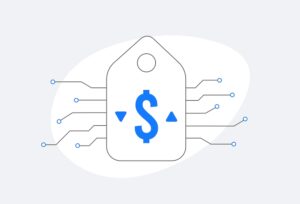
Millennial. Generation X. Gen Y. Gen Z. We’ve run out of letters! Panic not, though, because the theory behind us all conforming to such labels is also running out of steam.
For years brands have had to approximate, assume and cajole us into behaving like the stereotype they’ve created for our age/ethnicity/geography/education/wealth. They then repeatedly broadcast these voices until we either play ball or hop to the next brand that has fluked a better approximation of us. Only now, with the onset of ever-more-capable digital propositions, can we begin to leverage such content—and, from it, expose context.
This context doesn’t need to be based on incorrect bias. It doesn’t try to pigeonhole behaviors into predefined buckets. It simply listens, learns, adapts and presents relevant, contextually aware feedback. And I don’t just mean it talks back to us in words we understand. Instead, it interacts with us with (at least what appear to be) very personalised messages, in a timely and sensitive manner.
With these increased powers, however, comes increased risk. Collecting too much data is already damaging brands. Often what starts with the best of intentions morphs into a more cynical route to new revenue streams. The saga involving Cambridge Analytica means we’re now all very much aware of this new paradigm. The threshold from useful to nosy is delicate, hard to define and dynamic—it moves. With data-security breaches, the latest GDPR guidelines and our general frustration at having our contact details repeatedly sold to the highest bidder, the pressure on brands is increasing rapidly.
And therein lies the problem. How do brands get to know us better if the risks associated with them capturing and processing our personal data are becoming prohibitively high?
A New Approach is Needed
Personal data is the lazy way to learn who is doing what and, from it, to infer why. We need a better understanding of the user journey, without interfering and without collecting a whole host of personal data that actually brands don’t actually need anyway. What if, instead, the data was abstracted and anonymised? The insights could remain just as powerful, albeit with a very different lens—based on usage data, not some arbitrary usage persona.
This new generation—we could call it “Generation I”—needs a methodology that strives, wherever possible, to ignore the supposed rules and instead focuses purely on the truth of actual user behaviours. Established questionnaire feedback techniques are still implemented but they are done without requiring personal data about the individuals. The questions are focused purely on that individual’s experience with the product and service.
Any pattern matching of their response is done purely from a data-centric position. If an elderly man in Colorado happens to provide the exact same feedback as a schoolgirl in Tokyo, so be it. This doesn’t mean a new morphed persona description is needed. It just means they happen to have, amongst all the other variables involved, the same opinion regarding that product at that moment in time. Even this apparent correlation is, to some degree, time limited and will almost certainly change for both of them in the future.
If such an approach can’t give us clear links from product experiences to specific age groups and demographics, what is it good for? Rather a lot, actually.
It gives unbiased accuracy. It also highlights that generic marketing messages for broad groups of people will only ever capture a finite percentage of the population (and likely annoy the rest of us). It shows clearly what propositions stick and what don’t, at an individual level. Most critically, it enables counter-intuitive and unexpected opportunities to be assessed and potentially rise to the surface. All those corner cases that were eliminated because they didn’t fit the mould can now be set free. Why not roll out new propositions to the market and see which stick?
Understand the Opportunities
This approach is all based on generating a more thorough understanding of the opportunity space before embarking on incurring substantial development costs. Whilst we’d all love to create experiences that are truly unique to each individual, that approach would likely represent financial suicide. Instead, what you can create is a design space based on all the user experiences you encounter. This highlights where there is potential for mass adoption, and clarifies where the outliers actually lie.
For example, consider a situation where a normal distribution of usage patterns has been assumed, targeting a specific demographic with a ‘one-size-fits-most’ product solution. What if analysis highlights a non-intuitive patient usage skew, with two very defined peaks of usage behavior? Clearly such evidence would suggest the need for two very different solutions, each tailored to a specific group of users.
There doesn’t need to be any consideration of assumed demographic here – the insights are based purely on the aggregated, amortised insights captured from the real world. Whilst such a solution would potentially increase development costs, it would also reduce market-success risk. It would enable a far more informed product/service development proposition.
Perhaps the two usage types could indeed be served by a single device but with a very different service front end (e.g. a different app function or similar). Perhaps two devices are indeed needed to fulfil all the user needs. Even then, a company could elect to build only one variant – perhaps to best serve the majority peak – or it could fund a product primarily aimed at the smaller user peak, safe in the knowledge that its product would potentially command a near-monopoly for that user group.
Using Data for More Targeted Experiences
Let’s consider a couple of examples, starting with the ubiquitous smartphone—the ultimate expression of personalized user experience, all built off a standard device platform. It is likely that no two of our smartphones are identical in terms of configuration, apps and media. Many of us consider our phones to be an extension of ourselves, a truly trusted friend, and unsurprisingly this business model has made Apple and co exceedingly wealthy.
At the other extreme are products that are aimed squarely at a specific market sub-sector. Islabikes builds bikes for children. Only children. All components of the bikes are designed to be suitable for kids only—smaller brake levers requiring less force to actuate, lighter frames and wheels, thinner handlebars to help kids grip the handles, etc. Every detail of the bike has been redesigned to suit a single target audience. The insight didn’t come from any brand exercise or persona development. It was far simpler than that—personal experience and disappointment at what the market was currently offering, subsequently verified by asking a lot of kids and their parents. The company has purposefully neglected most of the bike market and focused purely on one thing—helping children learn to ride a bike—and, in doing so, has created a hugely popular and fast-growing brand loved by parents and kids the world over.
Whatever the go-to-market strategy, starting from an unbiased, reliably informed basis can only lead to more suitable—and more targeted—experiences. And that’s true for Gen A to Z.
Tom Lawrie-Fussey is a digital services specialist at Cambridge Design Partnership.




